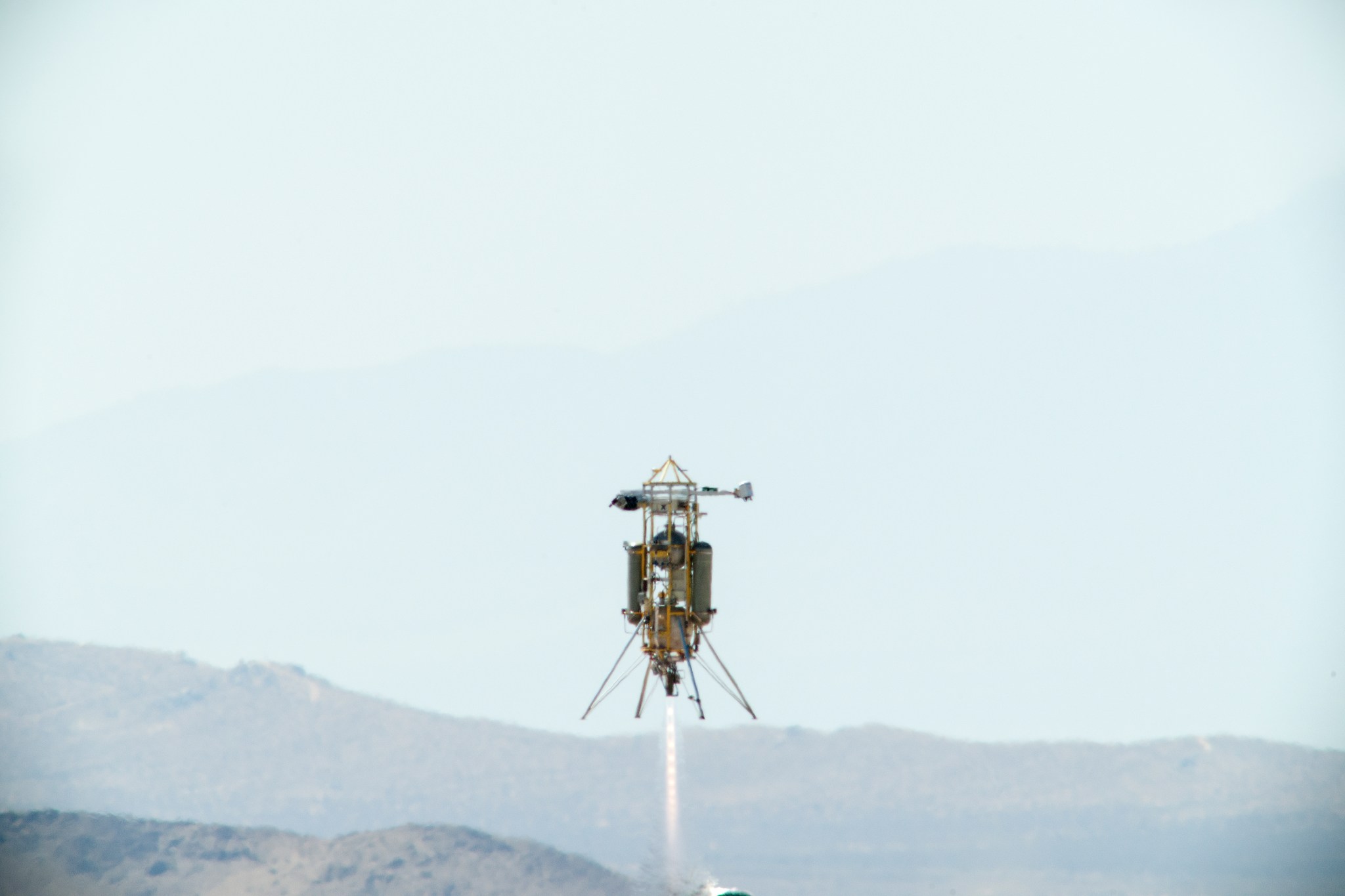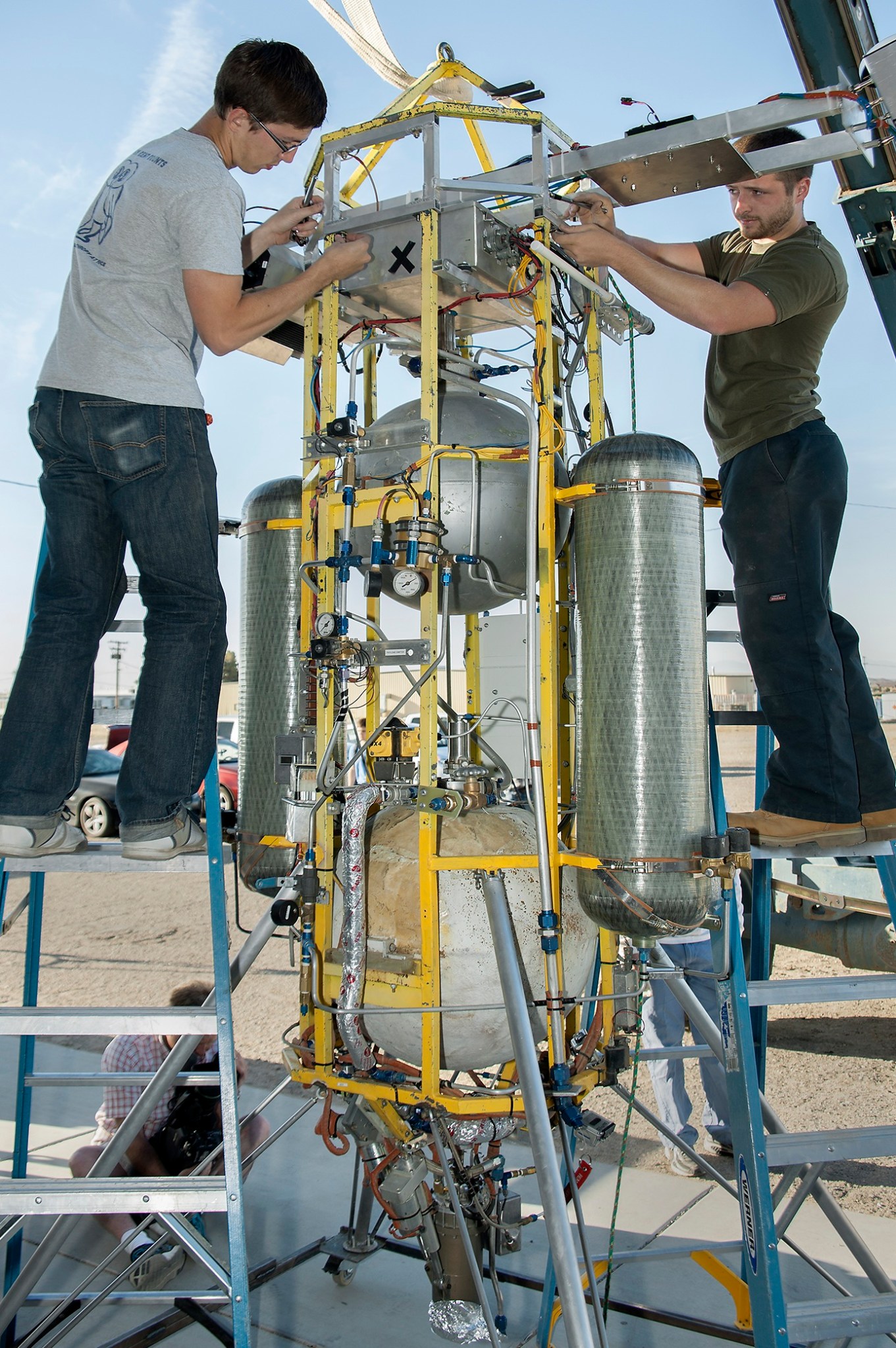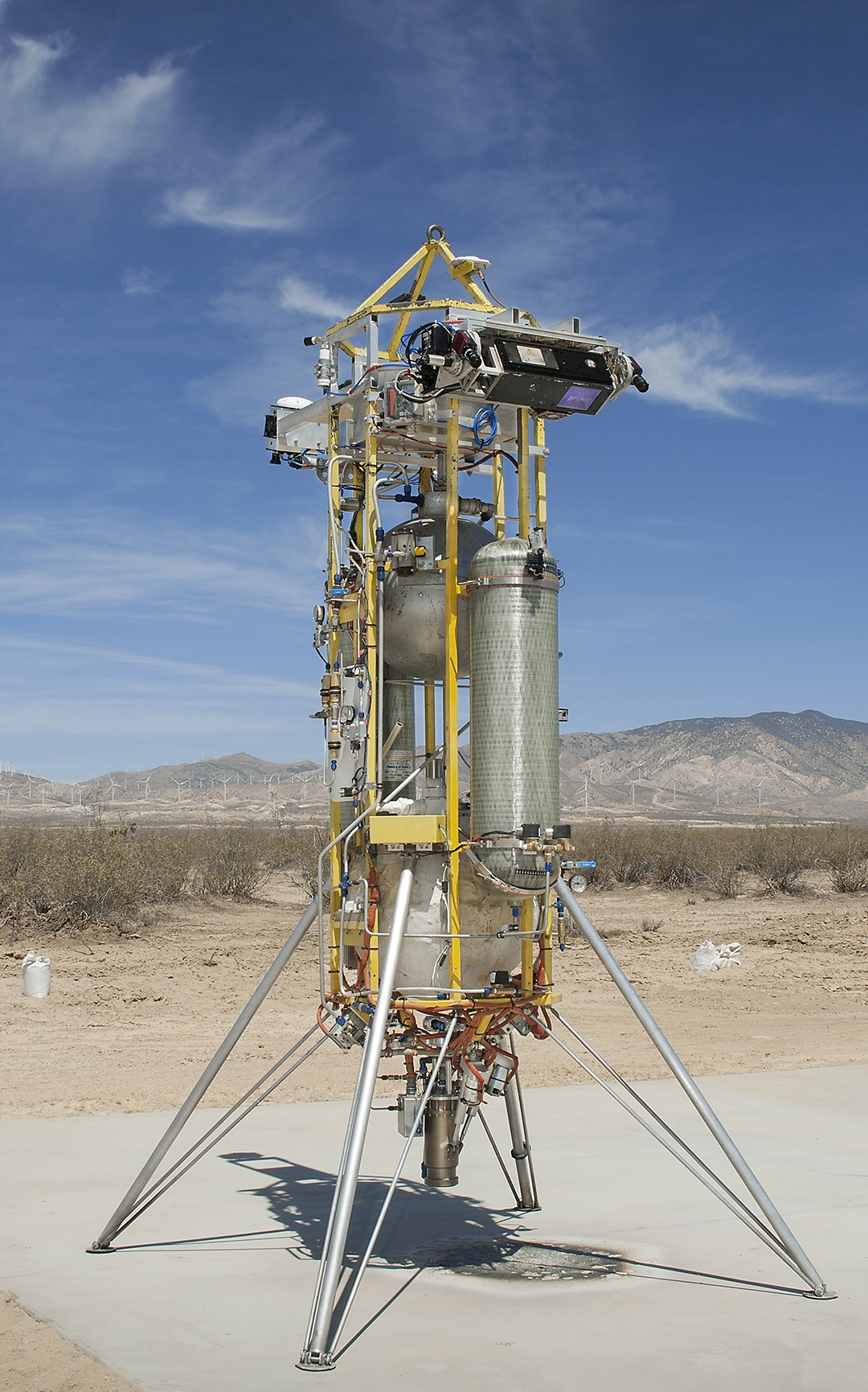Astrobotic Technology’s newly developed autonomous landing system was put to the test recently when it controlled Masten Space Systems’ XA-0.1B Xombie suborbital technology demonstration rocket during a NASA-sponsored launch and landing at the Mojave Air and Space Port in Mojave, California.
In a June 20 test funded by the Flight Opportunities Program of NASA’s Space Technology Mission Directorate, the vertical-takeoff, vertical-landing Xombie ascended to about 853 feet (260 meters) in 25 seconds. During the boost phase, the Astrobotic Autolanding System (AAS) was activated and it navigated the vehicle to a precise landing location, avoiding sand bags that had been placed as mock hazards. If the AAS had chosen a landing point other than one of the two open pads, Masten software would have overridden the prototype system to land the vehicle safely.
The test objectives included accurately tracking Xombie’s location, detecting hazards larger than 10 inches (25 centimeters) and finding an acceptable landing location. The AAS uses cameras and an inertial measurement unit for navigation, because the Global Positioning System used on Earth would not be available for a landing on another planet or the moon.
“Conceptually, this is like the Apollo missions where the astronauts navigated to a safe landing by looking out the window of the lunar landing module,” explained Kevin Peterson, Astrobotic’s chief technology officer. “In this case, we have an onboard computer instead of an astronaut, and the cameras, inertial measurement unit and software are so precise that they can track the craft’s location to within a few meters.”
In February, Mojave-based Masten and Astrobotic, headquartered in Pitttsburgh, had flown the Xombie in an open-loop test in which the AAS payload was running and collecting data. The open-loop flights followed a pre-set trajectory, but the vehicle did not accept any data or commands from the autonomous landing system.
The June 20 flight test was a closed-loop flight where the Astrobotic landing technology sent both data and commands to Xombie, influencing its flight path to avoid hazards and land safely.
“I am very excited by the preliminary results of this test,” said Chris Baker, Flight Opportunities Program campaign manager. “Terrain relative navigation and autonomous hazard avoidance are on the technology road maps for missions to Mars, Europa and elsewhere in the solar system. Two small companies working together have successfully demonstrated technologies that will not only assist them in their future endeavors, but have also been identified as enabling future NASA missions.”
Through NASA’s Flight Opportunities Program, officials have been working with commercial companies, universities and government organizations to coordinate testing of innovative space technologies on research flights through the use of commercial suborbital flight platforms.
The Flight Opportunities Program is managed at NASA’s Armstrong Flight Research Center at Edwards, California. NASA’s Ames Research Center at Moffett Field, California, manages the solicitation and selection of technologies to be tested and demonstrated on commercial flight vehicles. For more information on the Flight Opportunities program, visit: https://www.nasa.gov/directorates/spacetech/flightopportunities/index.html
NASA’s Space Technology Mission Directorate is innovating, developing, testing, and flying hardware for use in NASA’s future missions. Over the next 18 months, the directorate will make significant new investments that address several high priority challenges for achieving safe and affordable deep-space exploration. For more information about NASA’s investment in space technology, visit: https://www.nasa.gov/spacetech
Read more on Astrobotic’s autonomous landing system.
Leslie Williams, Public Affairs
NASA Armstrong Flight Research Center, Edwards, Calif.

























